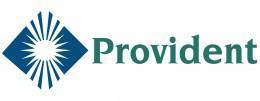An Update on Investment & Consolidation in the Addiction Treatment Sector
Published August 2022
The addiction treatment sector continues to be one of the most active investment areas within the healthcare services universe, as a combination of attractive macro level tailwinds and favorable demand dynamics drive consolidation and outside investor interest.
Substance use disorder (“SUD”) cases increased in recent years due to elevated levels of mental distress, a rise in the prevalence of potent drugs, and the continued lack of recovery support. Concurrently, drug overdose deaths in the United States also increased, soaring from 185K in 2020 to 215K in 2021 (16% year-over-year increase), with nine states realizing a 30% annual increase in substance use-related mortality.
Recent regulatory developments implemented to combat the crisis, such as the Eliminating Kickbacks in Recovery Act (“EKRA”) and amendments to the Mental Health Parity and Addiction Equity Act (“MHPAEA”), prompted industry alignment between patients and payors for comprehensive treatment offerings. As a result, addiction treatment programs focused their efforts to expand operational capabilities and accessibility to treatment options, driving outside investment in the sector.
So much so, that as of Q2 2022, 45+ groups operated across the United States with private equity backing. 27 states currently have a presence of five or more platforms, with 13 states having a presence of 10+. Most consolidation has been fairly recent, with over 75% of transactions occurring since the start of 2016 and approximately 15 organizations moving on to their second or third private equity partner.
Given the current transaction landscape and rate at which the sector continues to mature, we expect to see increased competition for transactions among sponsors already invested in the space. Further, half of platforms on both their first and second private equity partner are 5+ years into their investment hold period, suggesting an uptick in both secondary and tertiary buyouts, as well as add-on acquisitions.
Provident Healthcare Partners (“Provident”) is an investment banking firm exclusively focused on advising healthcare companies through transactions. In this white paper, we examine the evolution of regulation and investment within the sector, emerging transaction and industry trends, as well as key drivers for premium valuations.
Whitepaper Summary:
- Introduction
- Evolution of the Addiction Treatment Space
- Emerging Trends in Addiction Treatment
- Driving Value in an Addiction Treatment Platform
- Partnership Considerations
- Select Private Equity Transactions
- Conclusion
